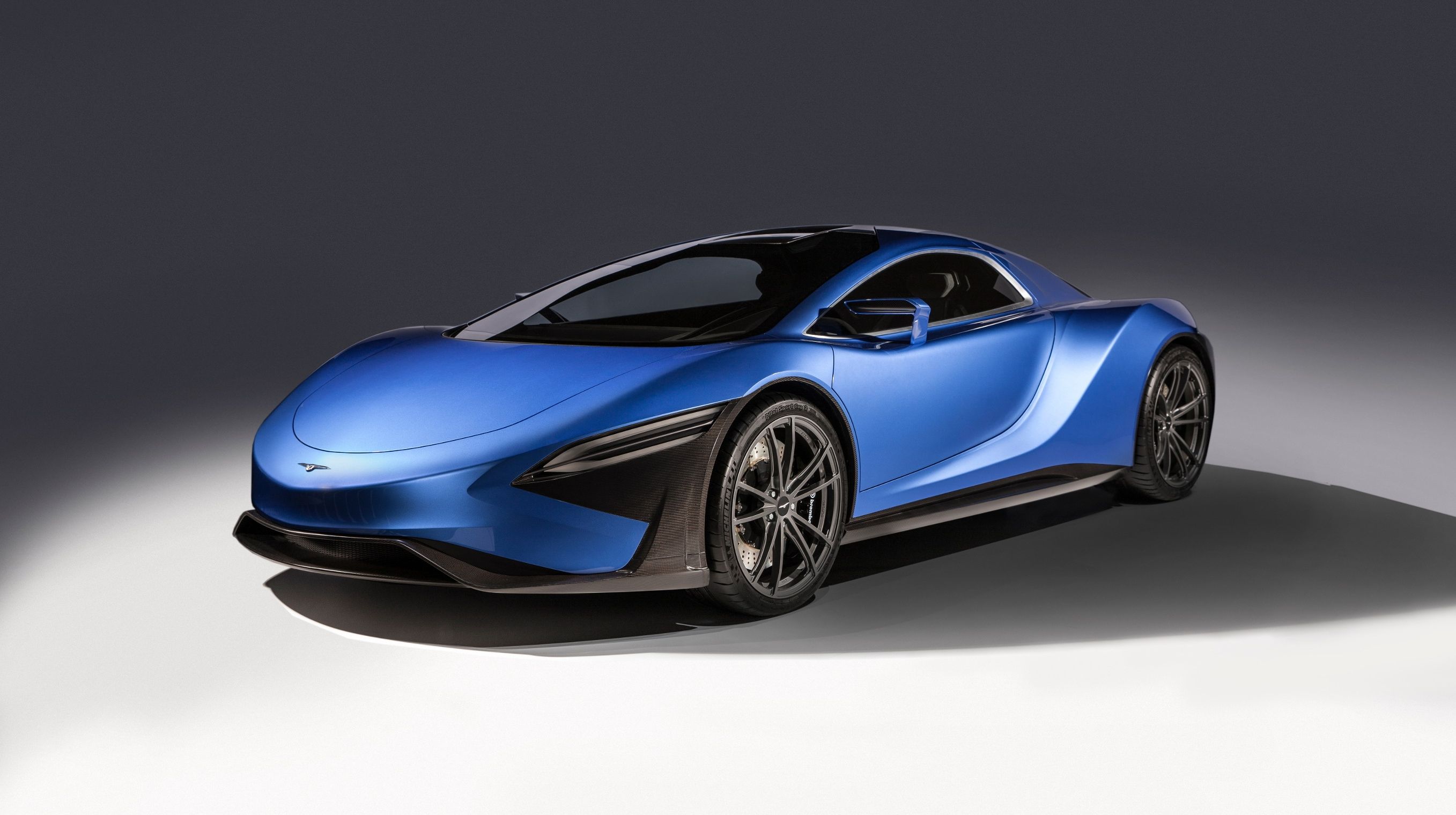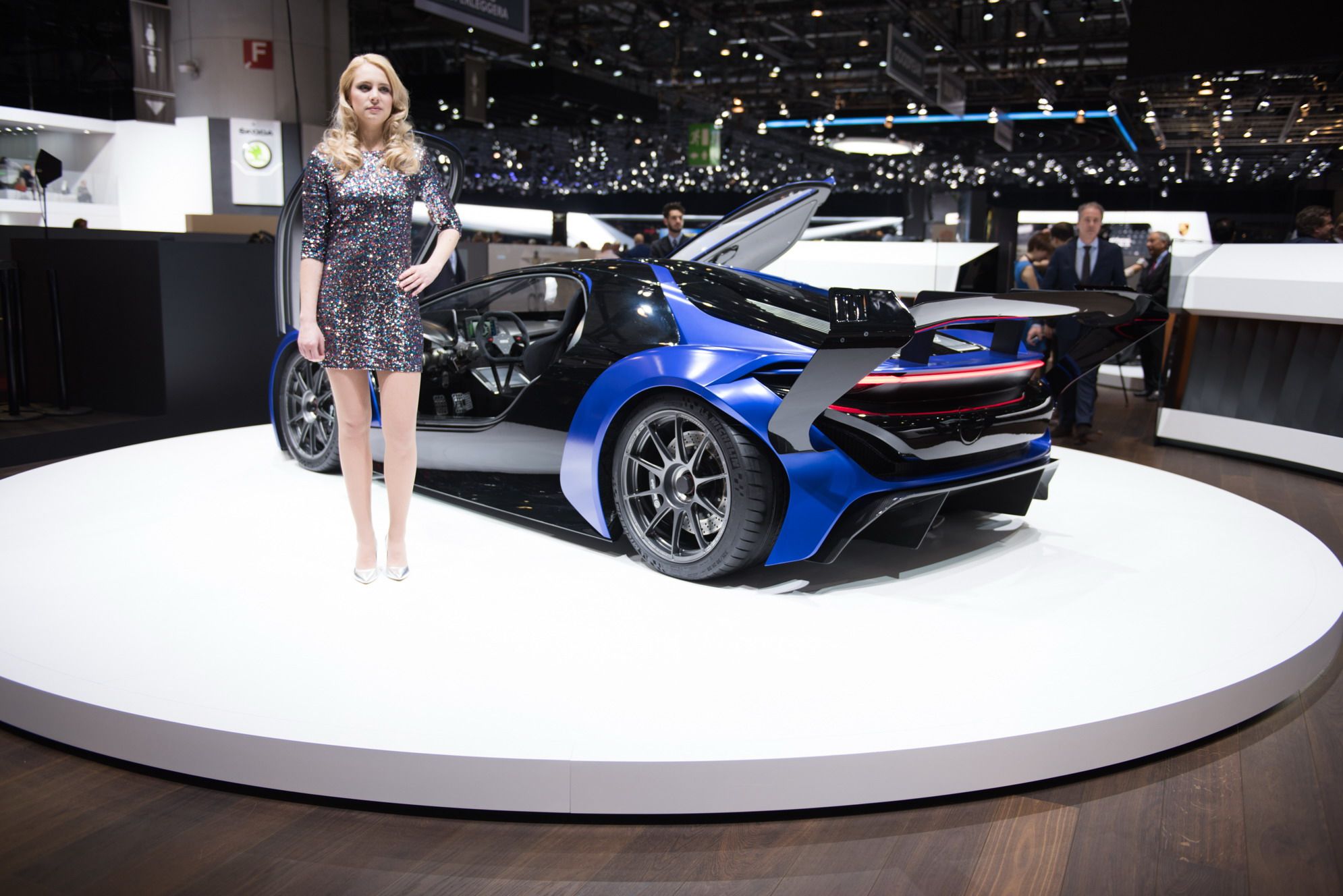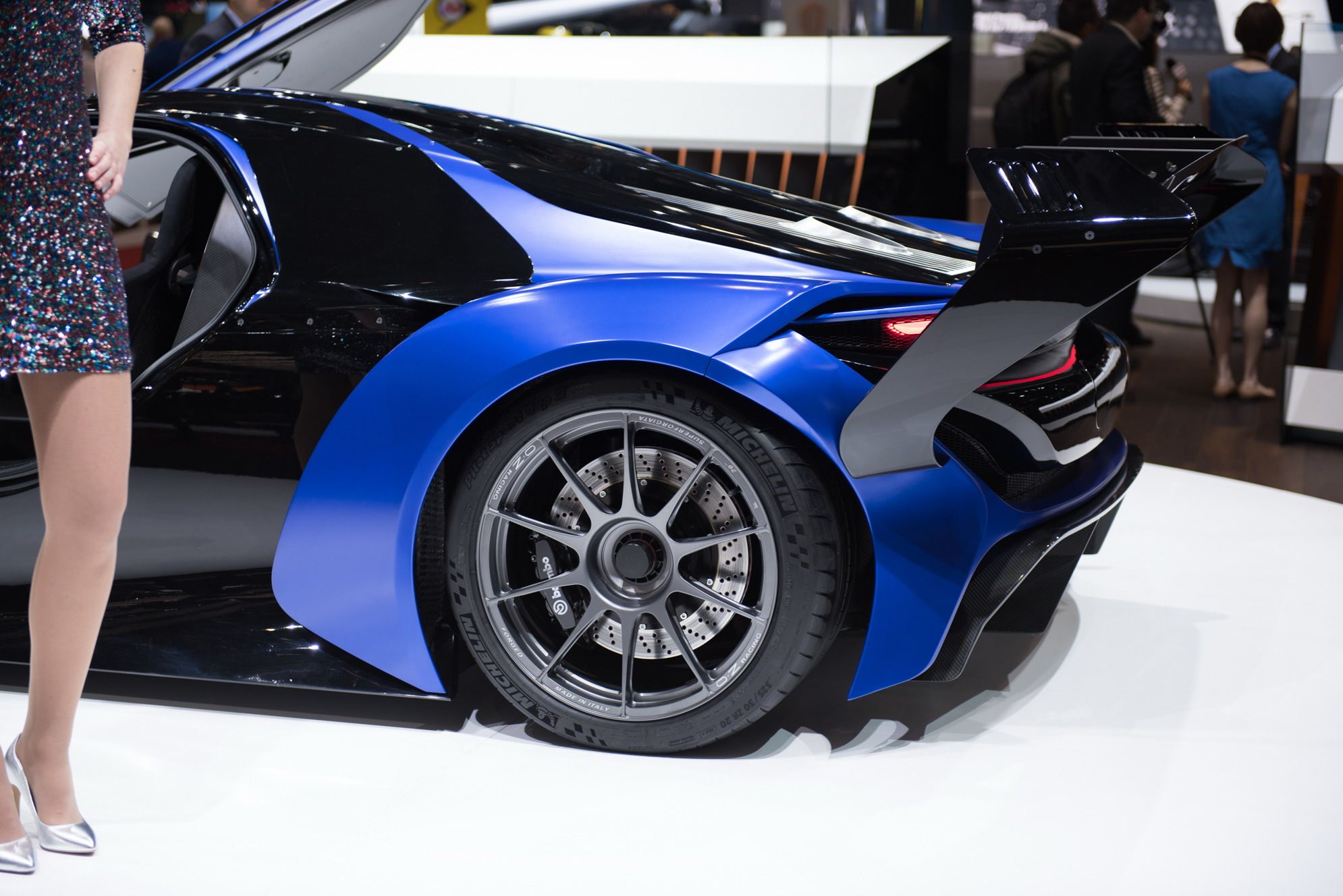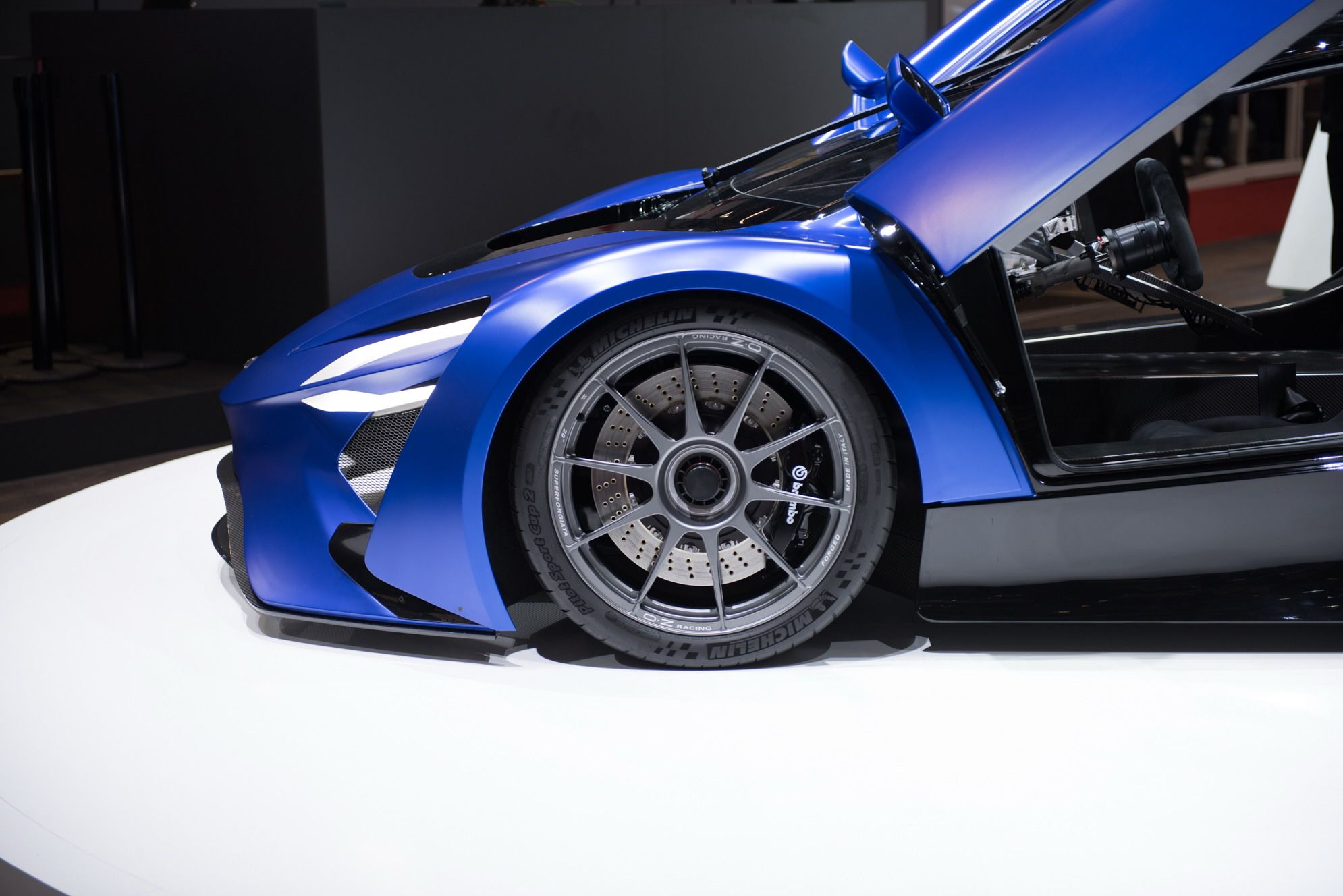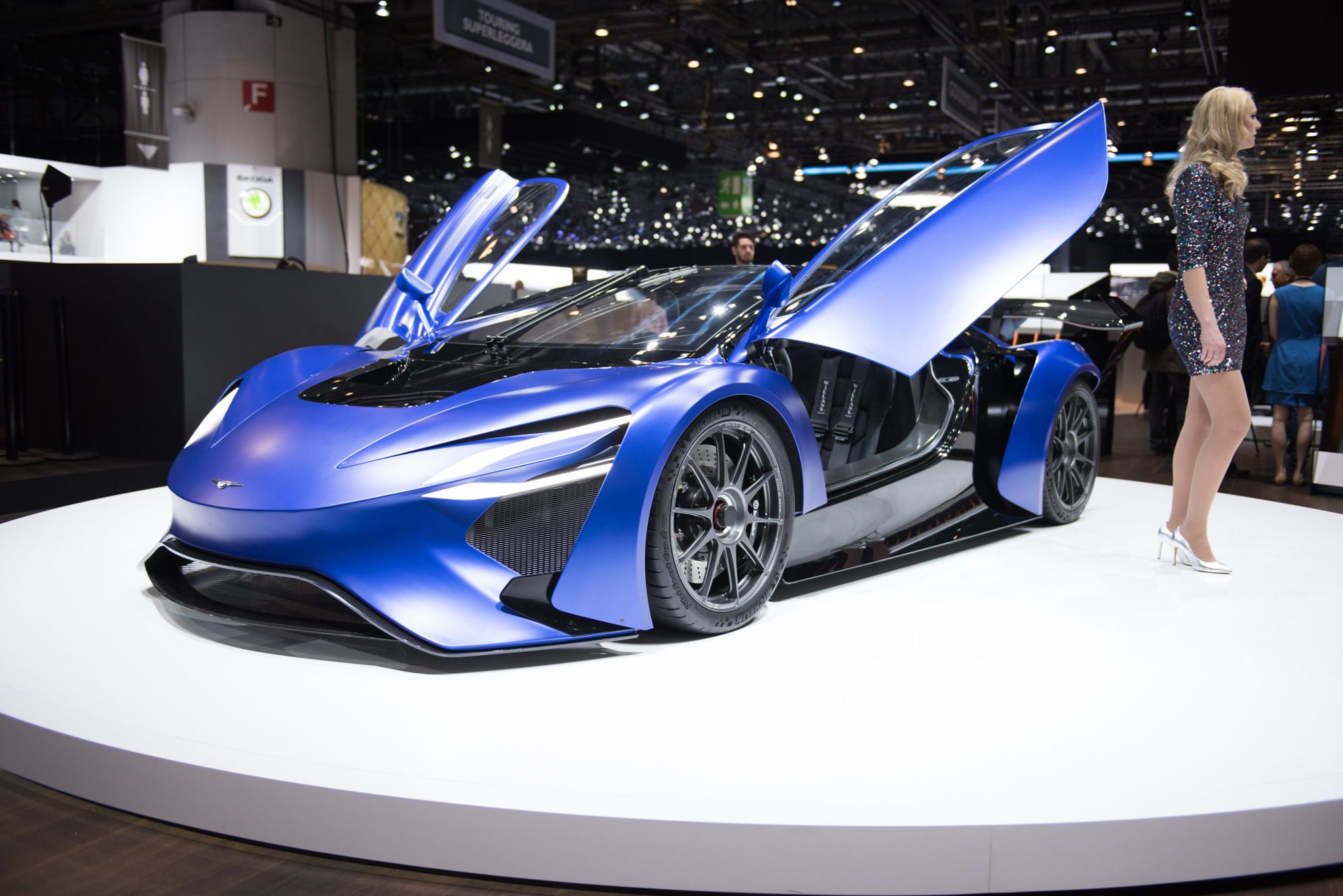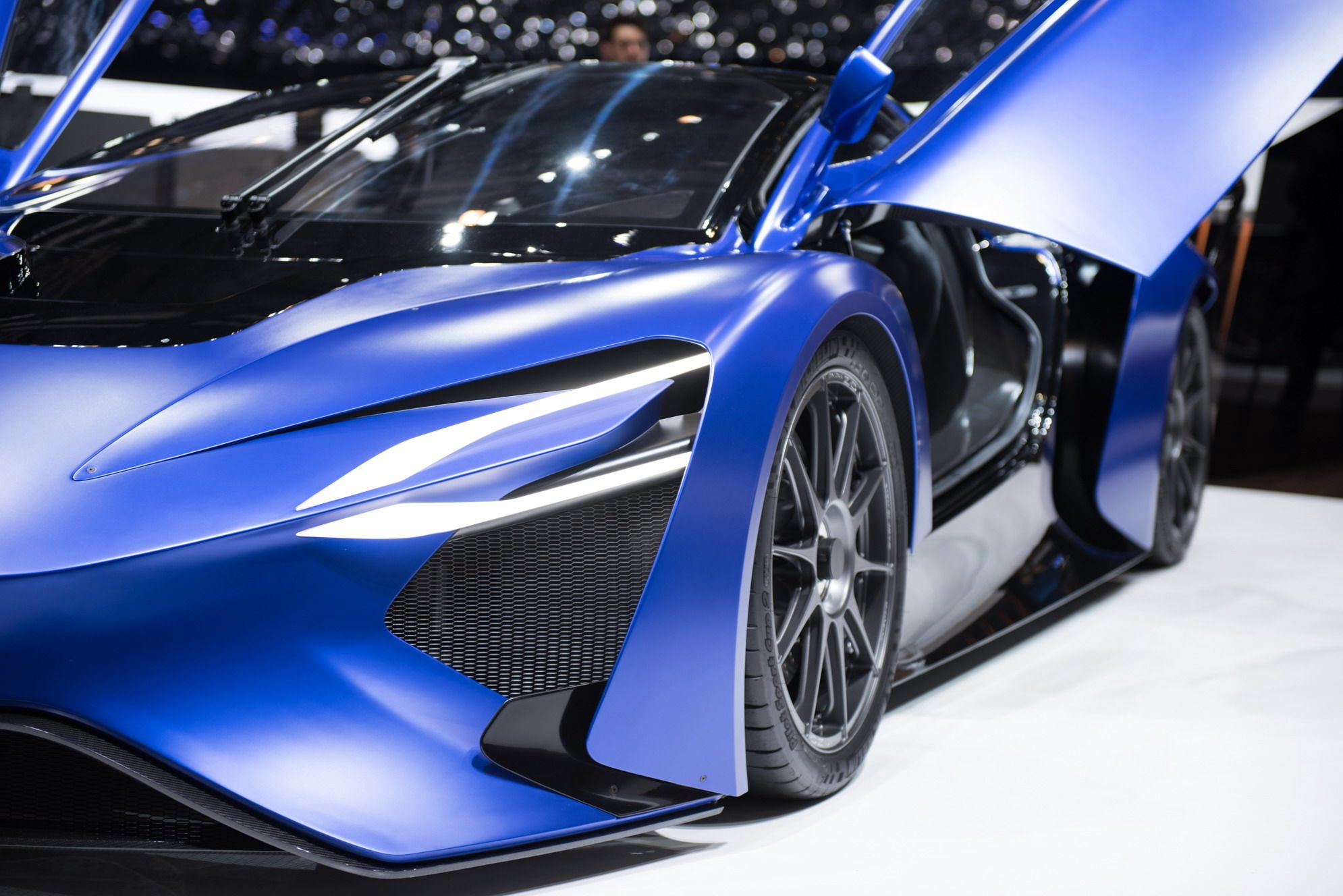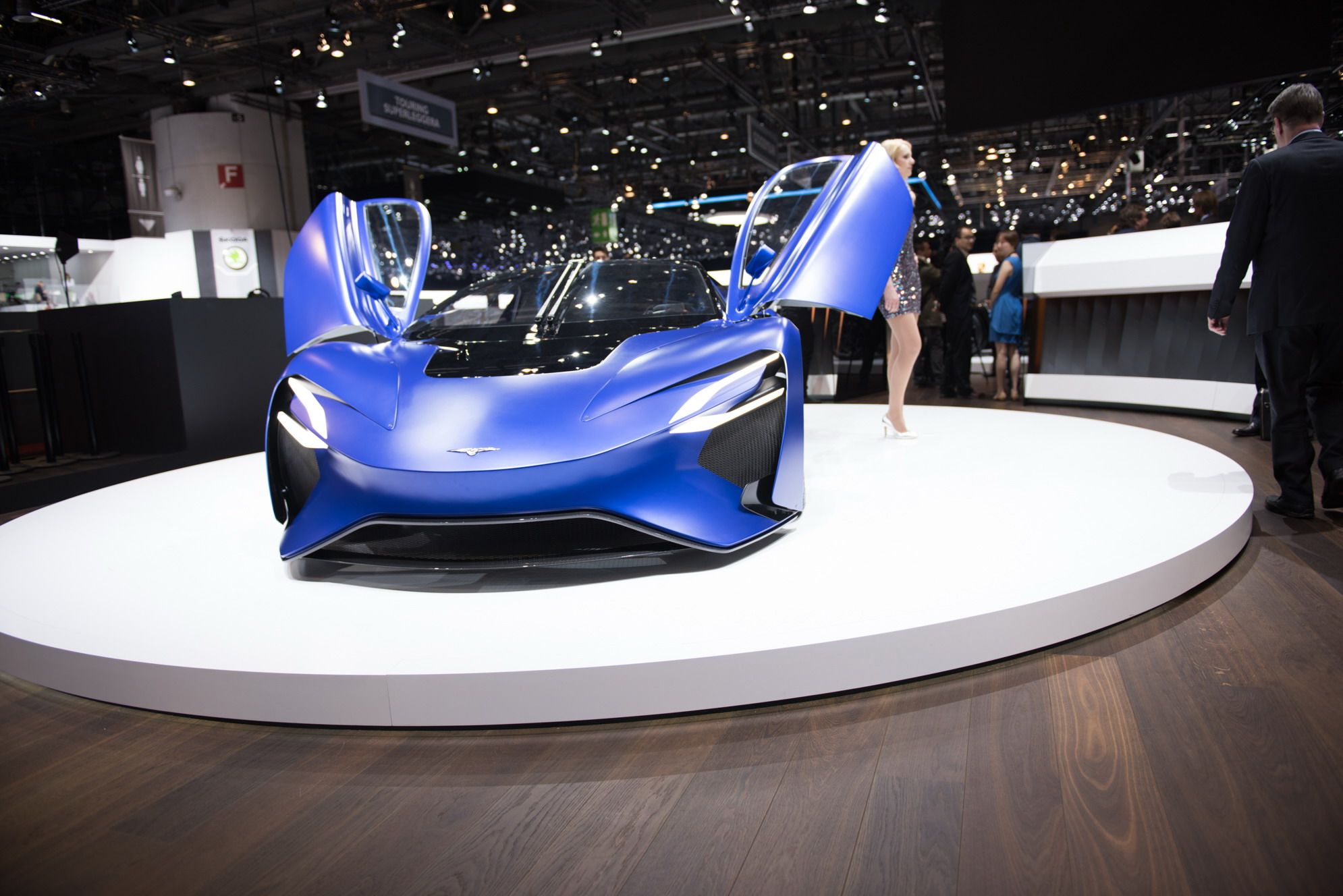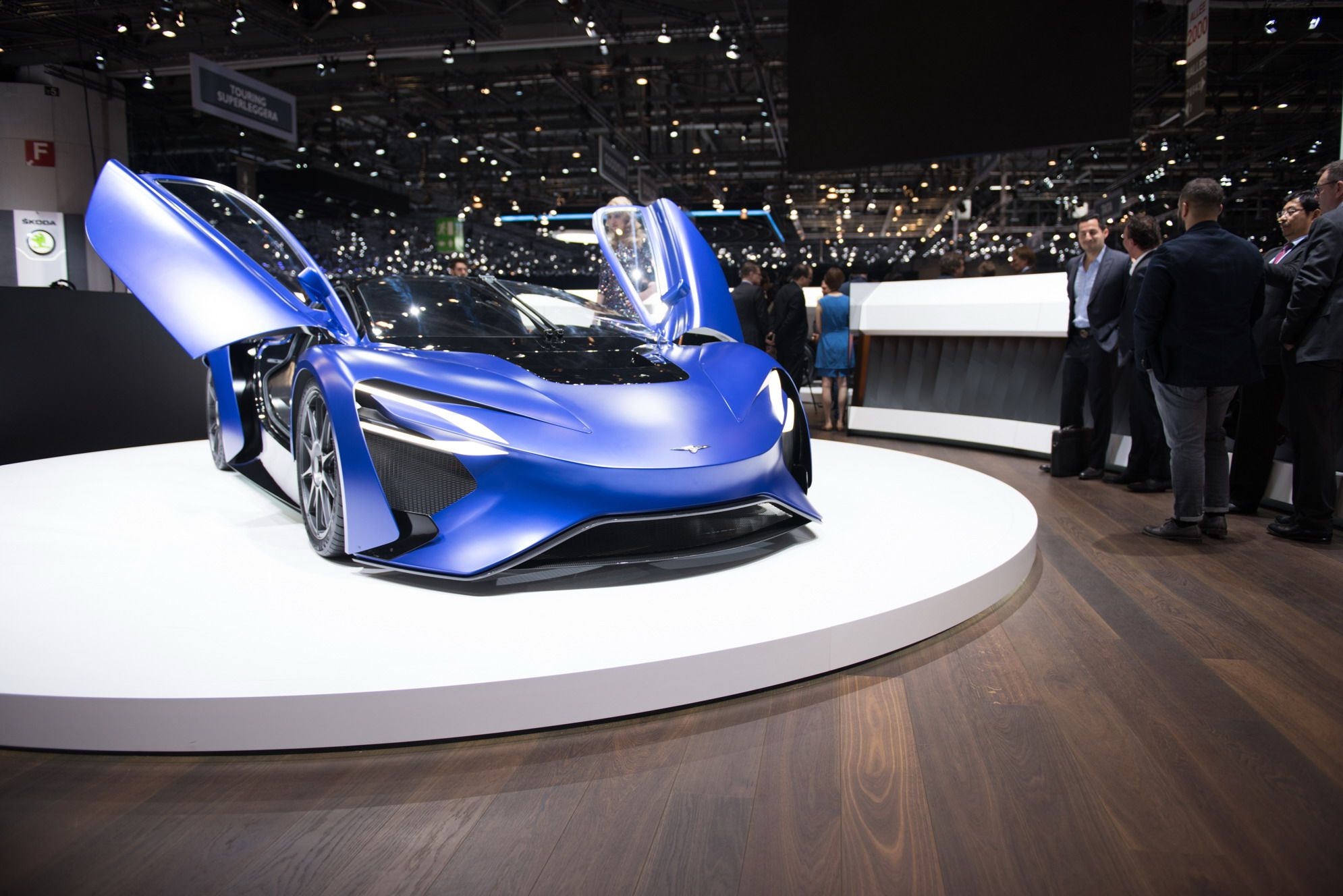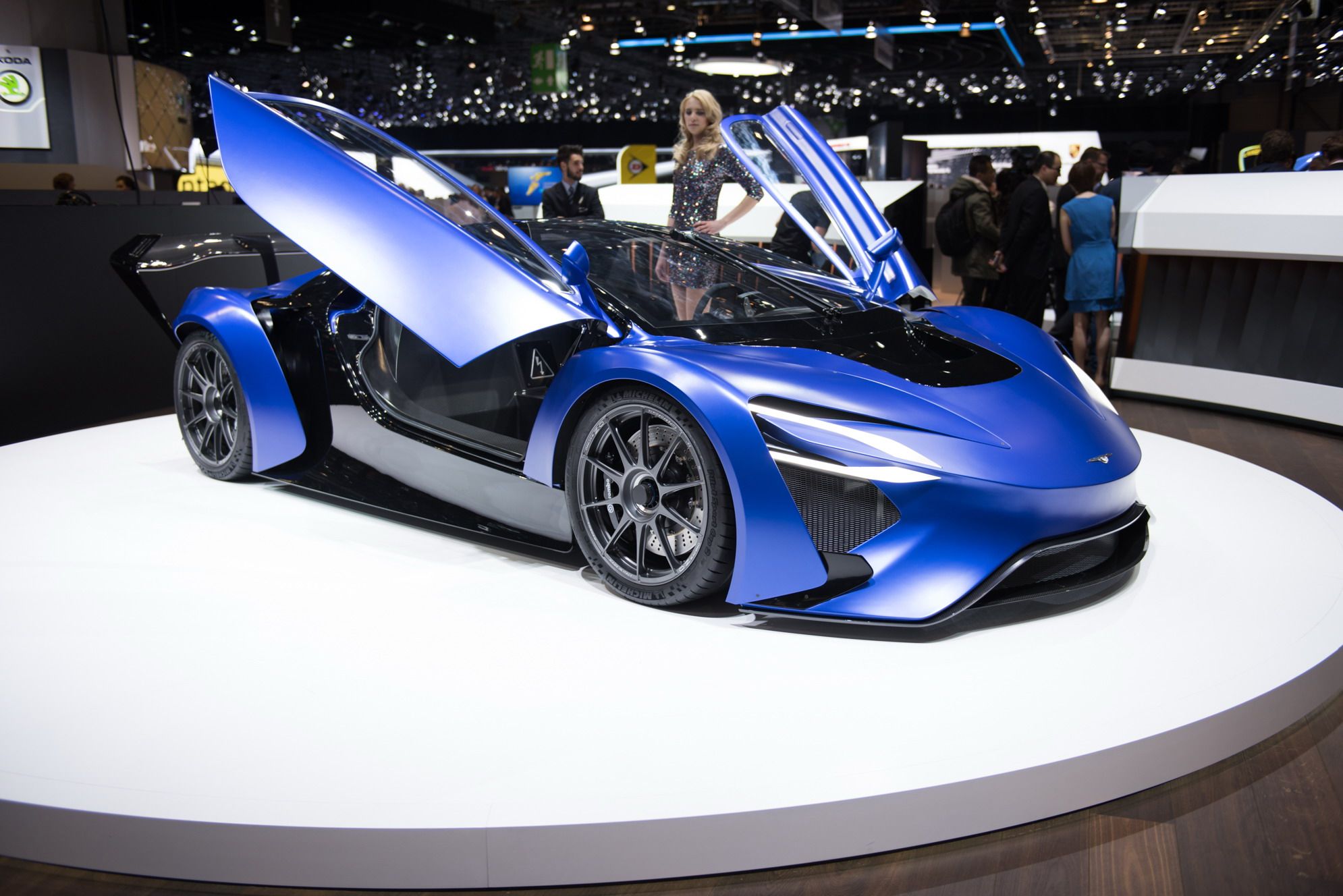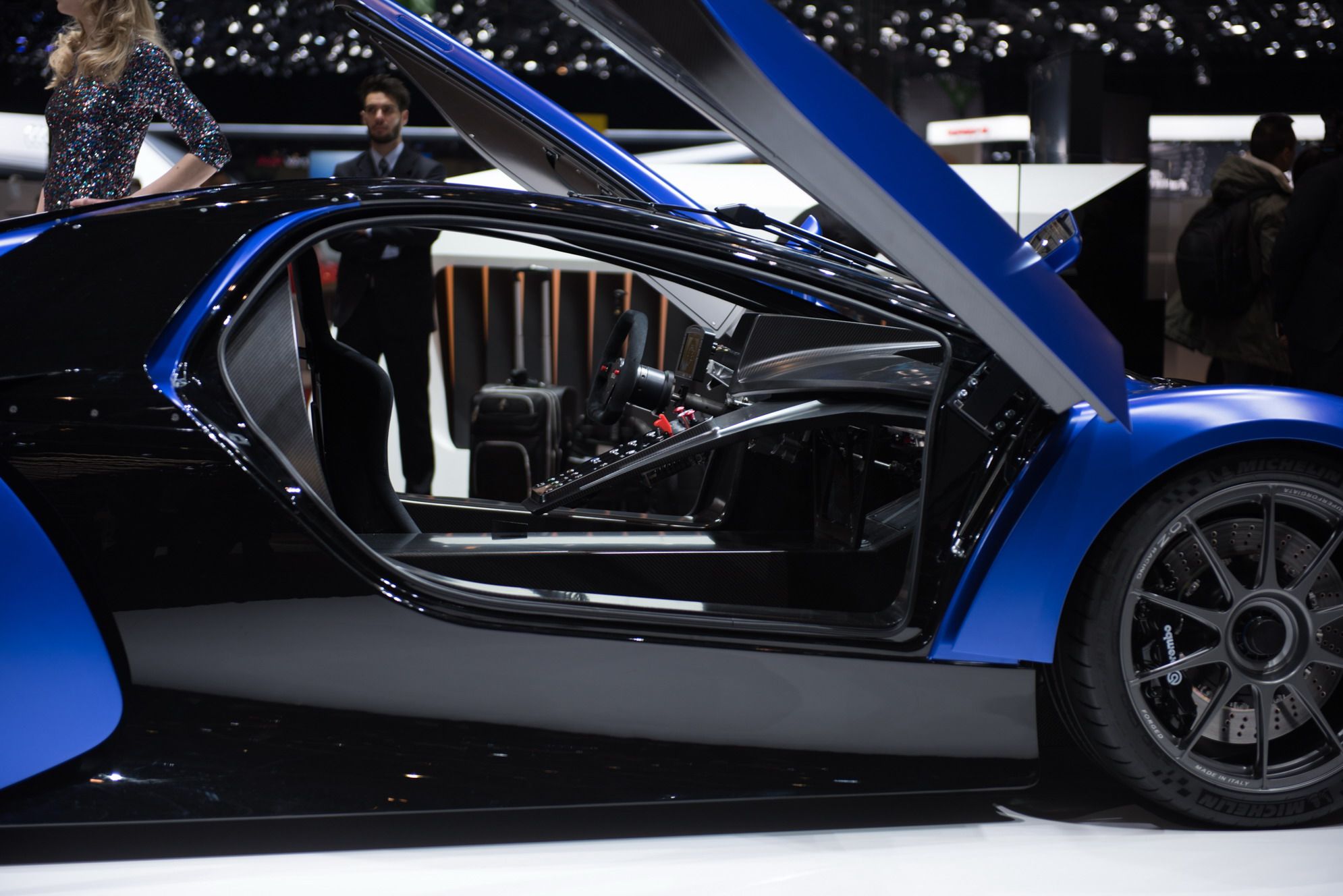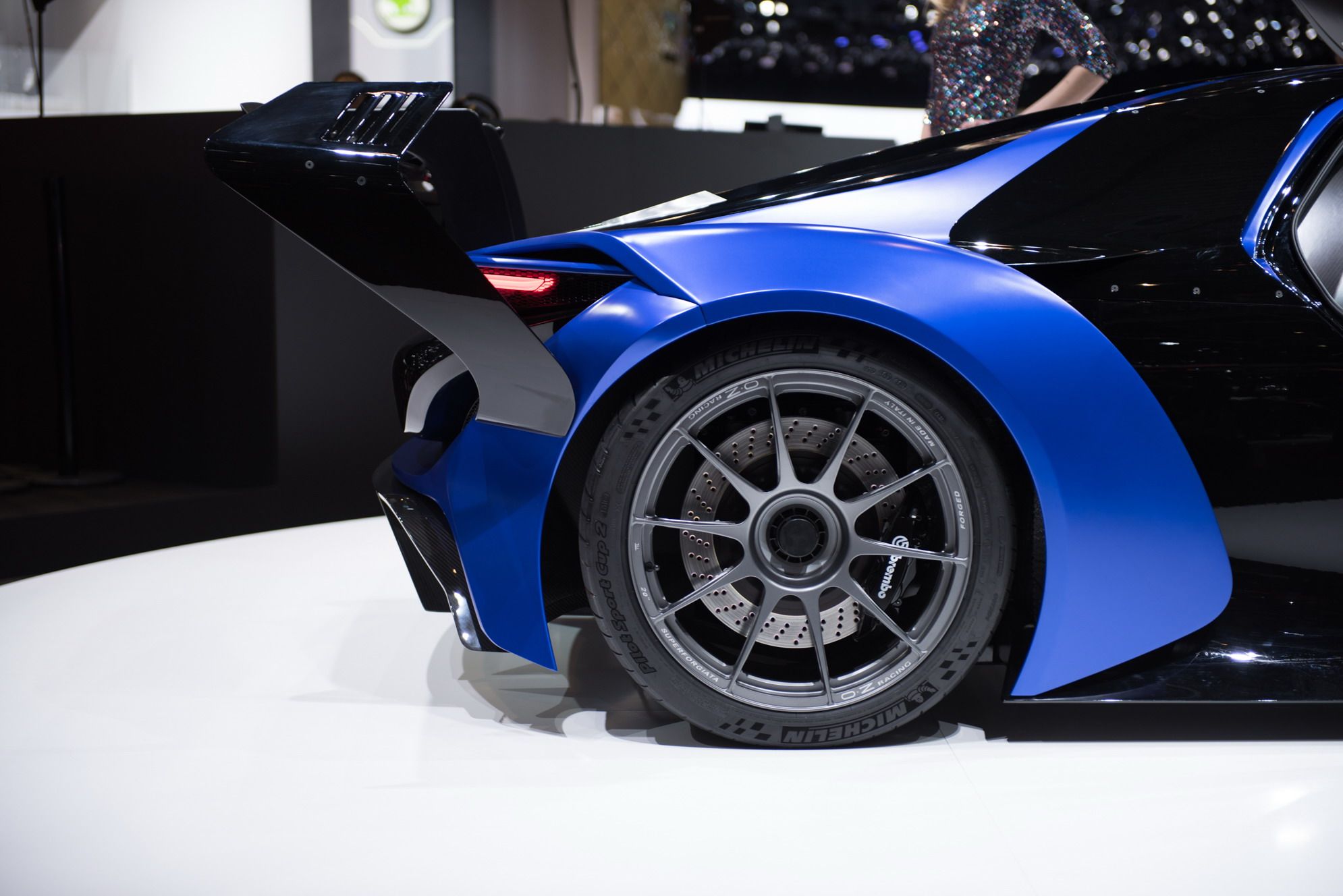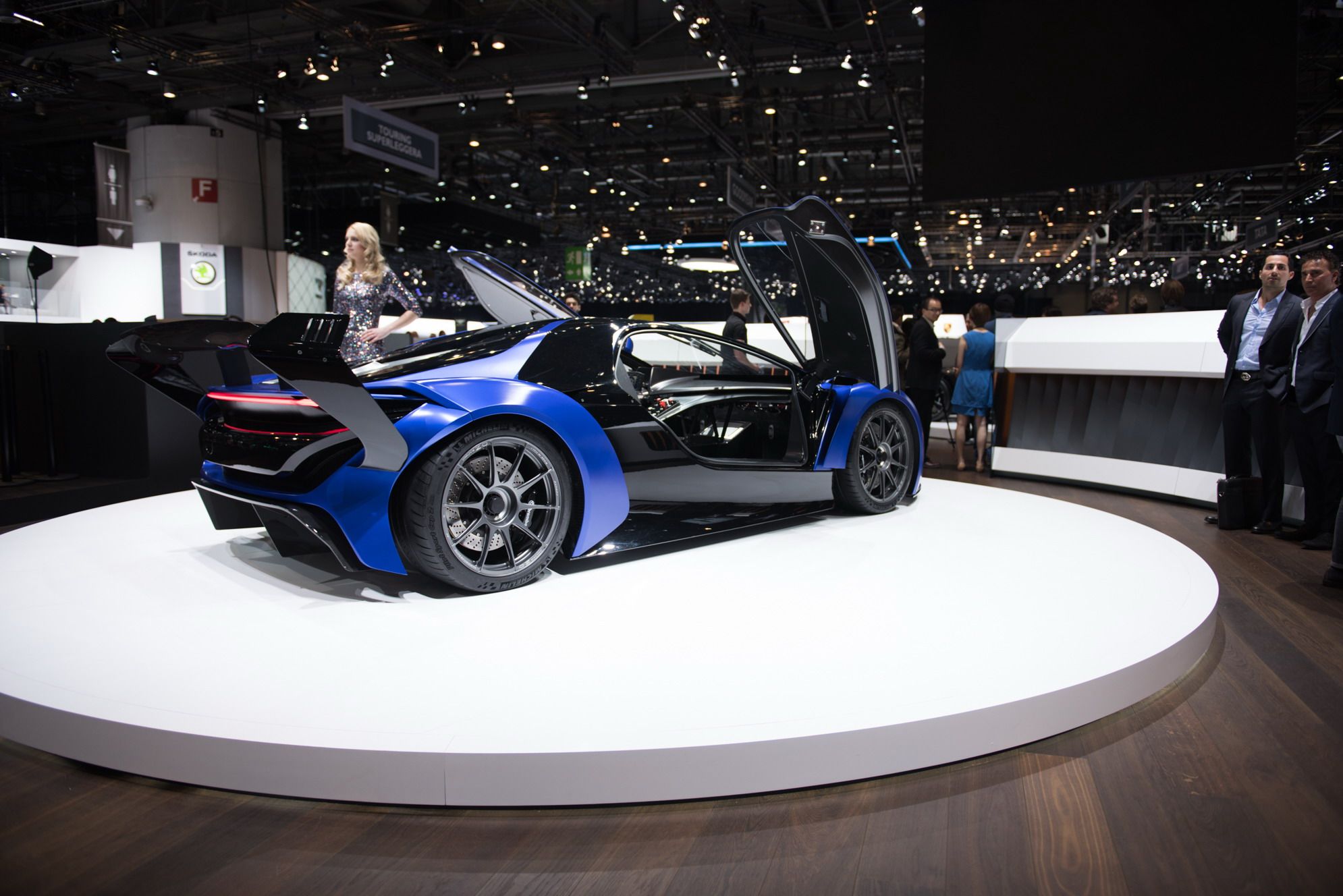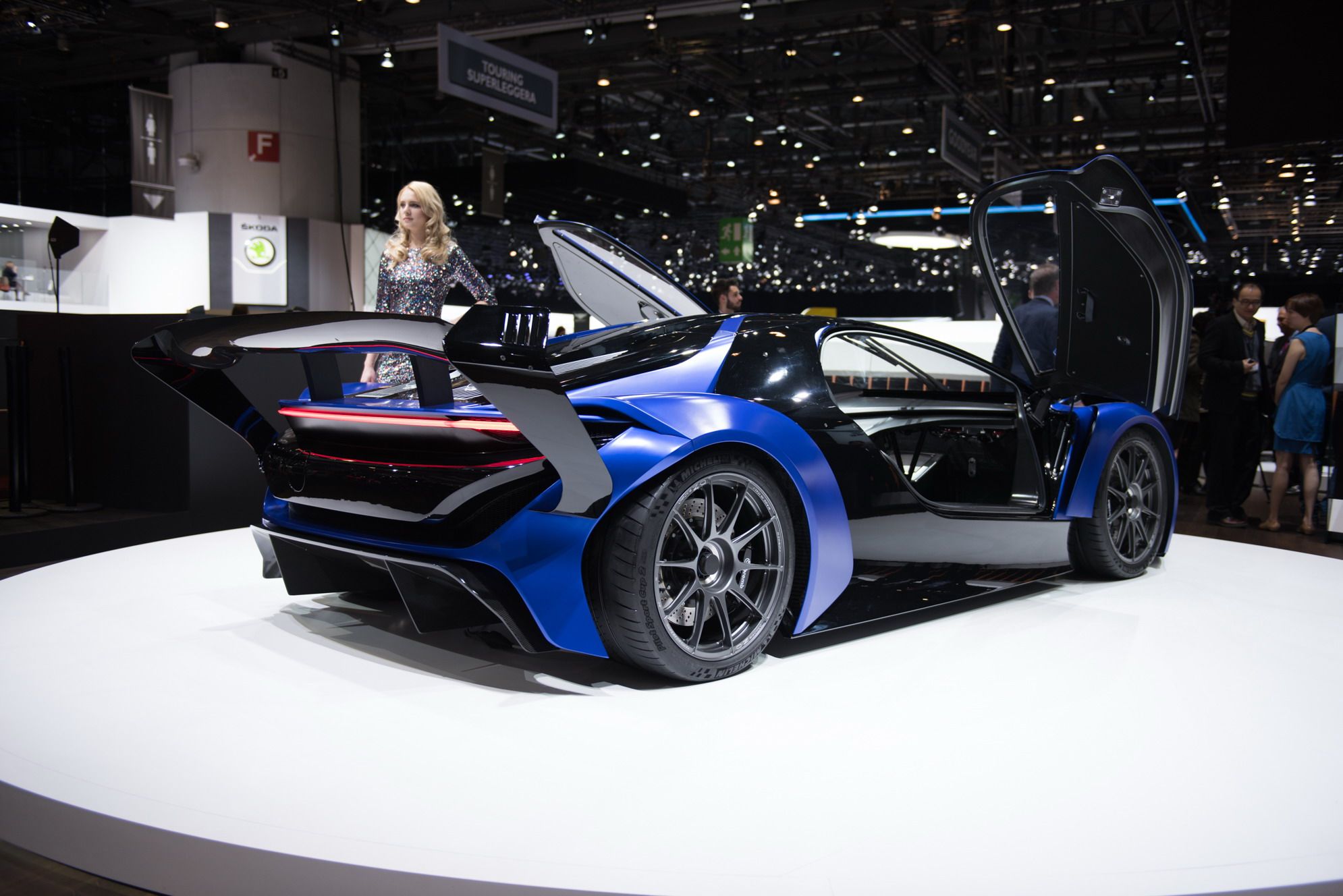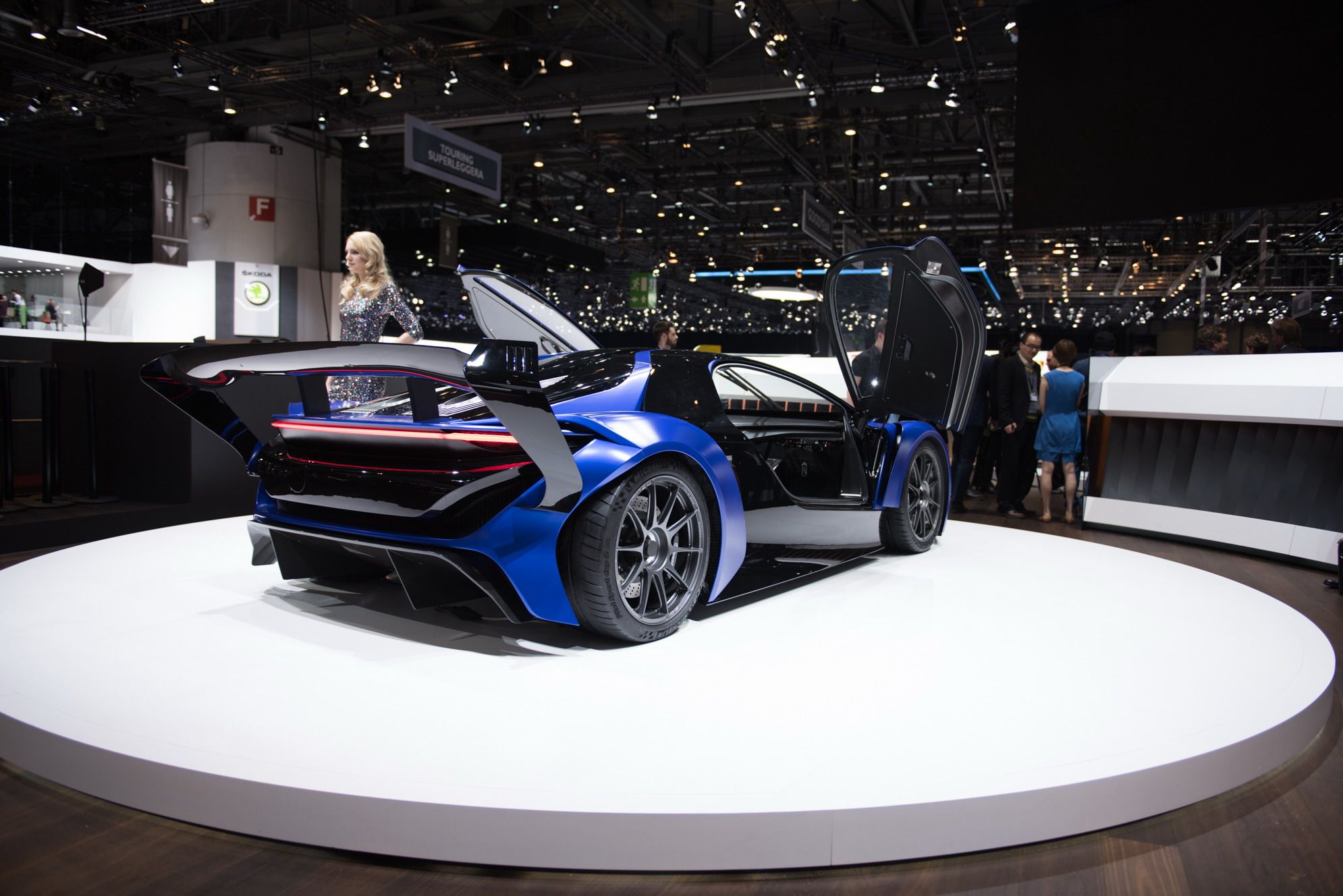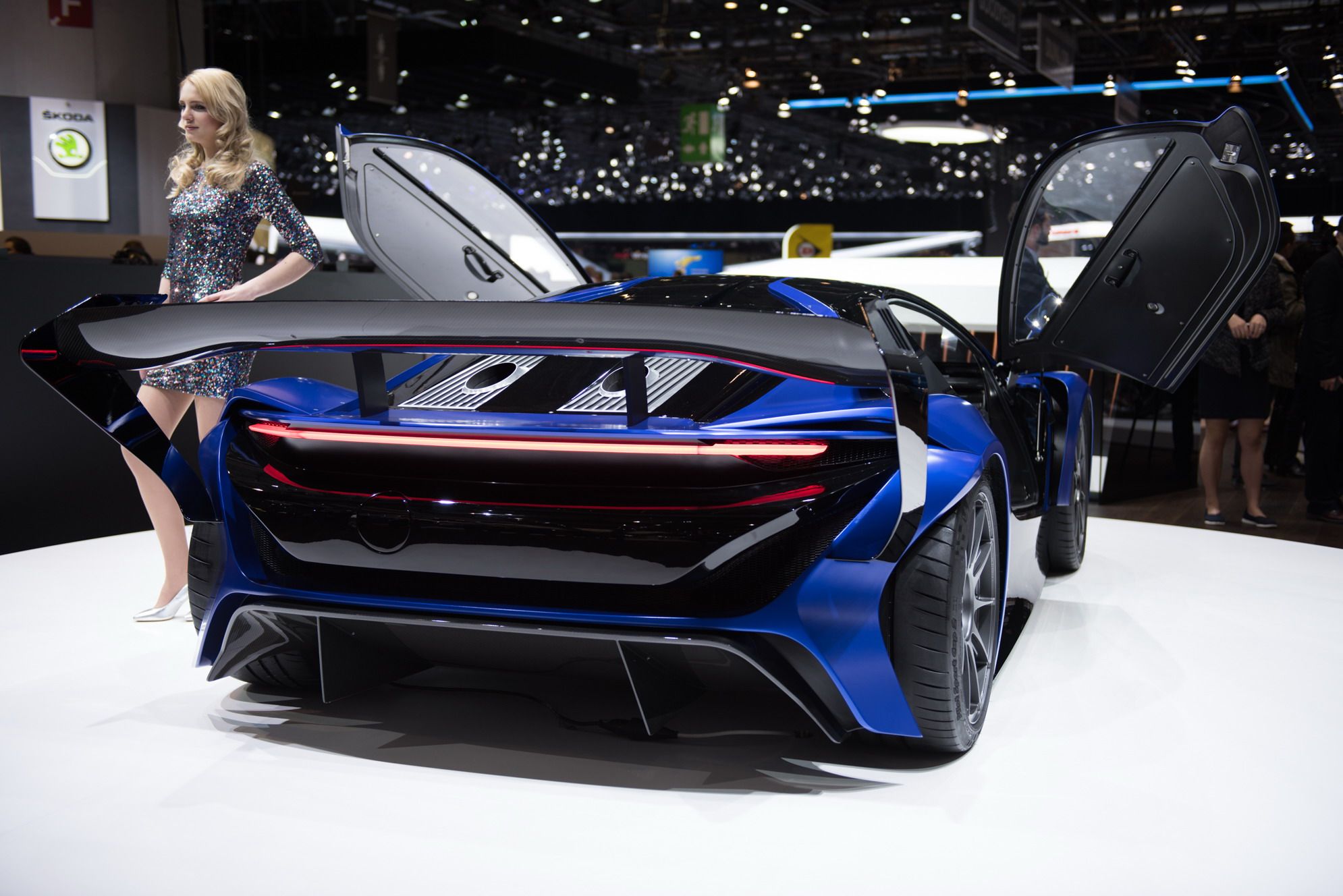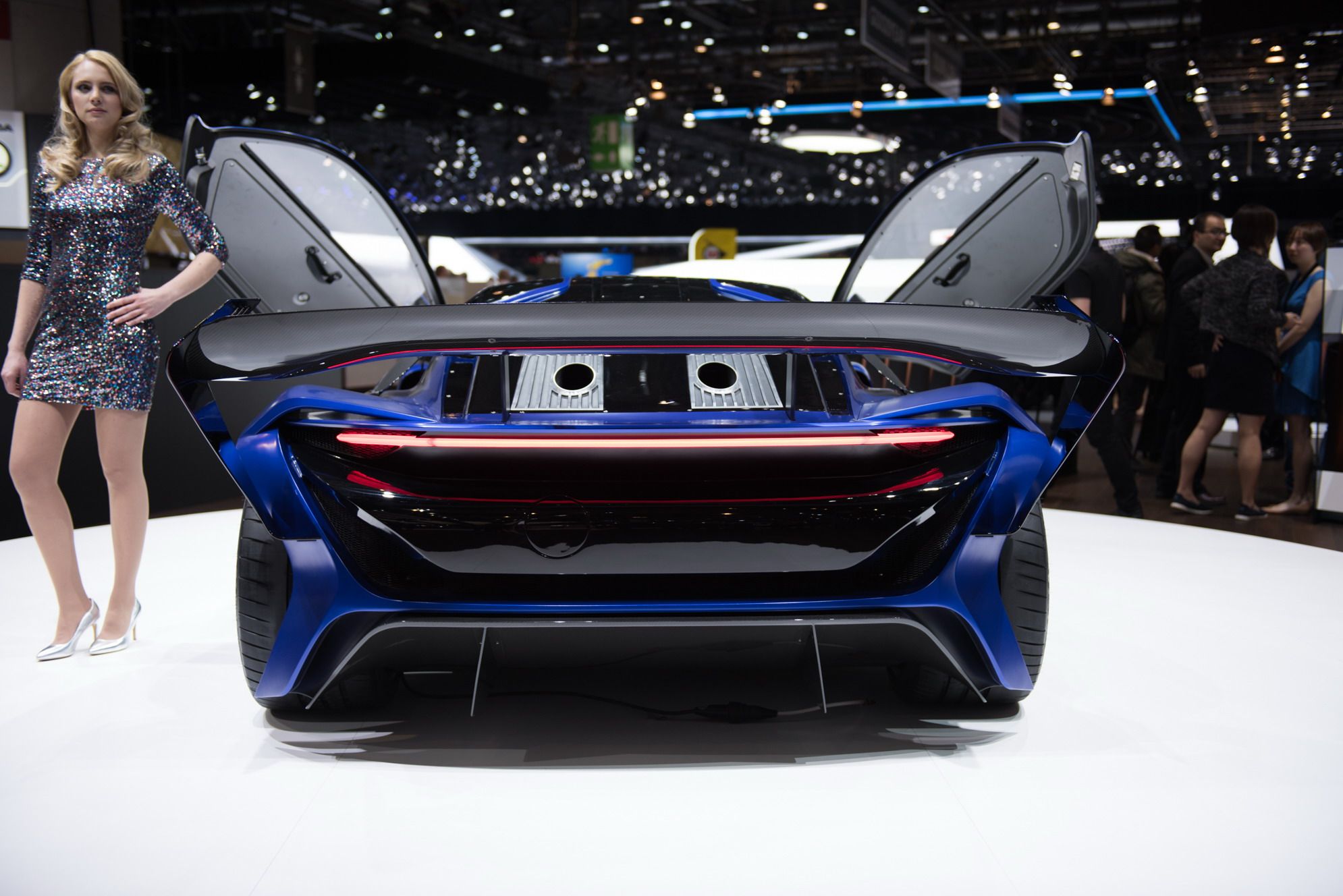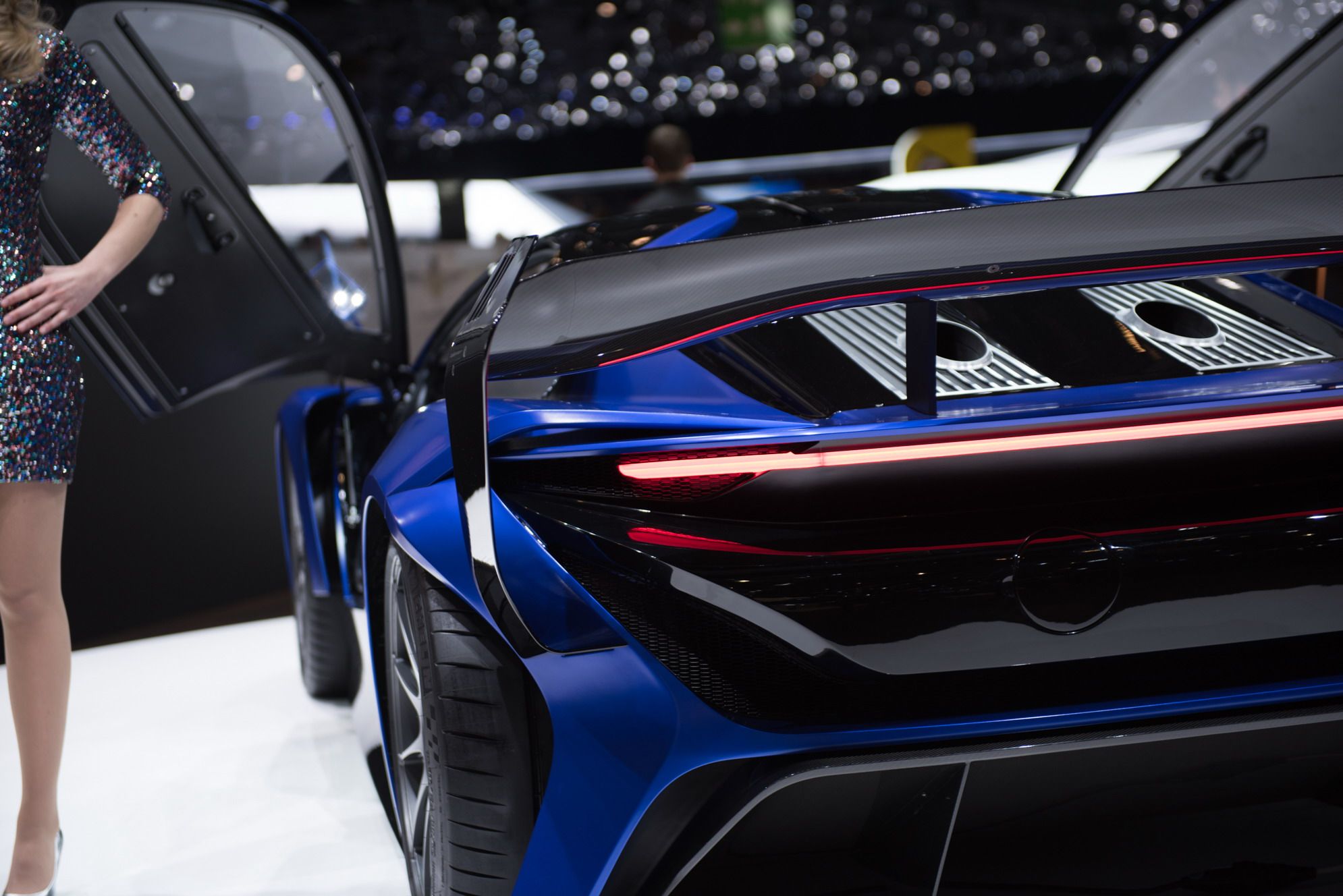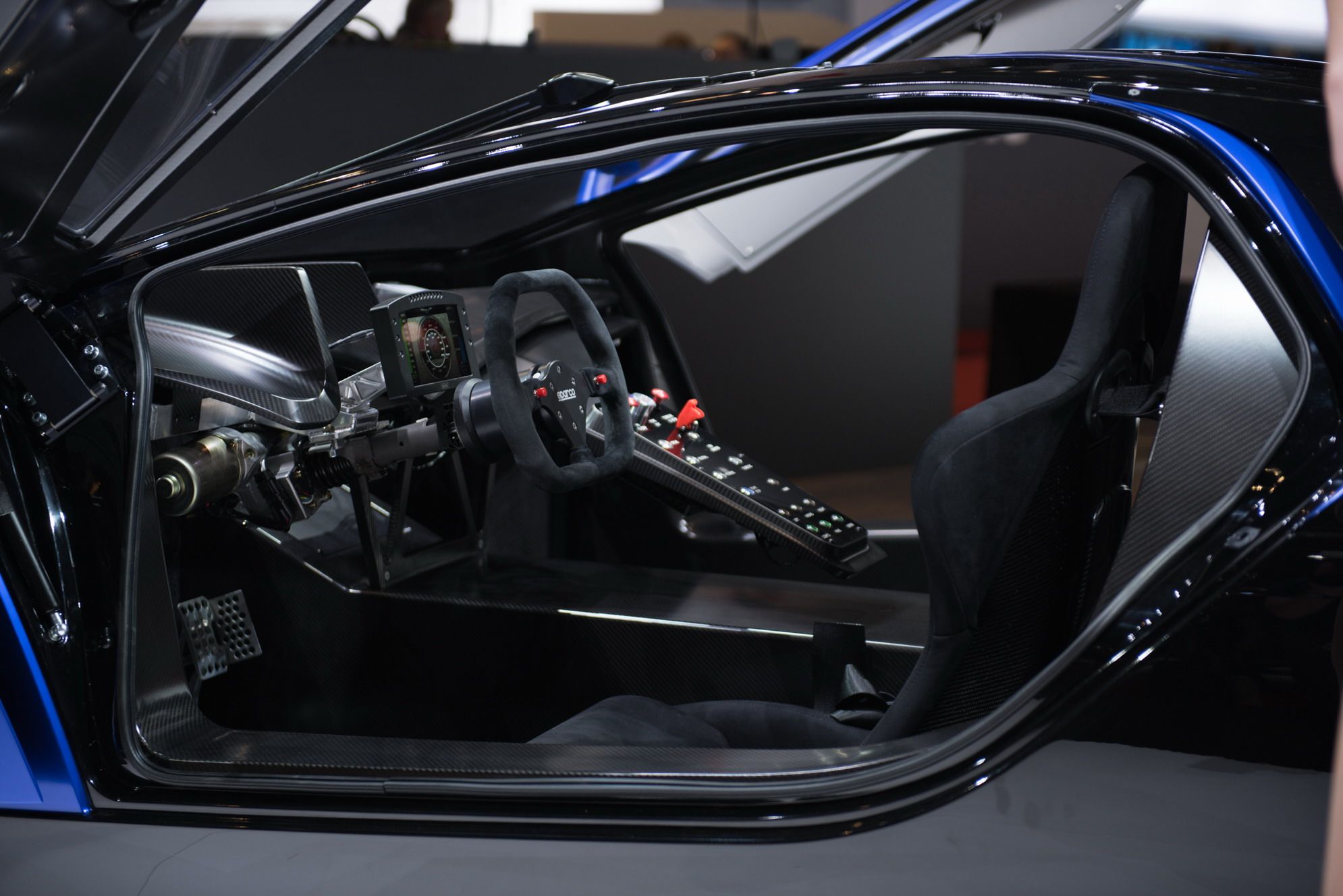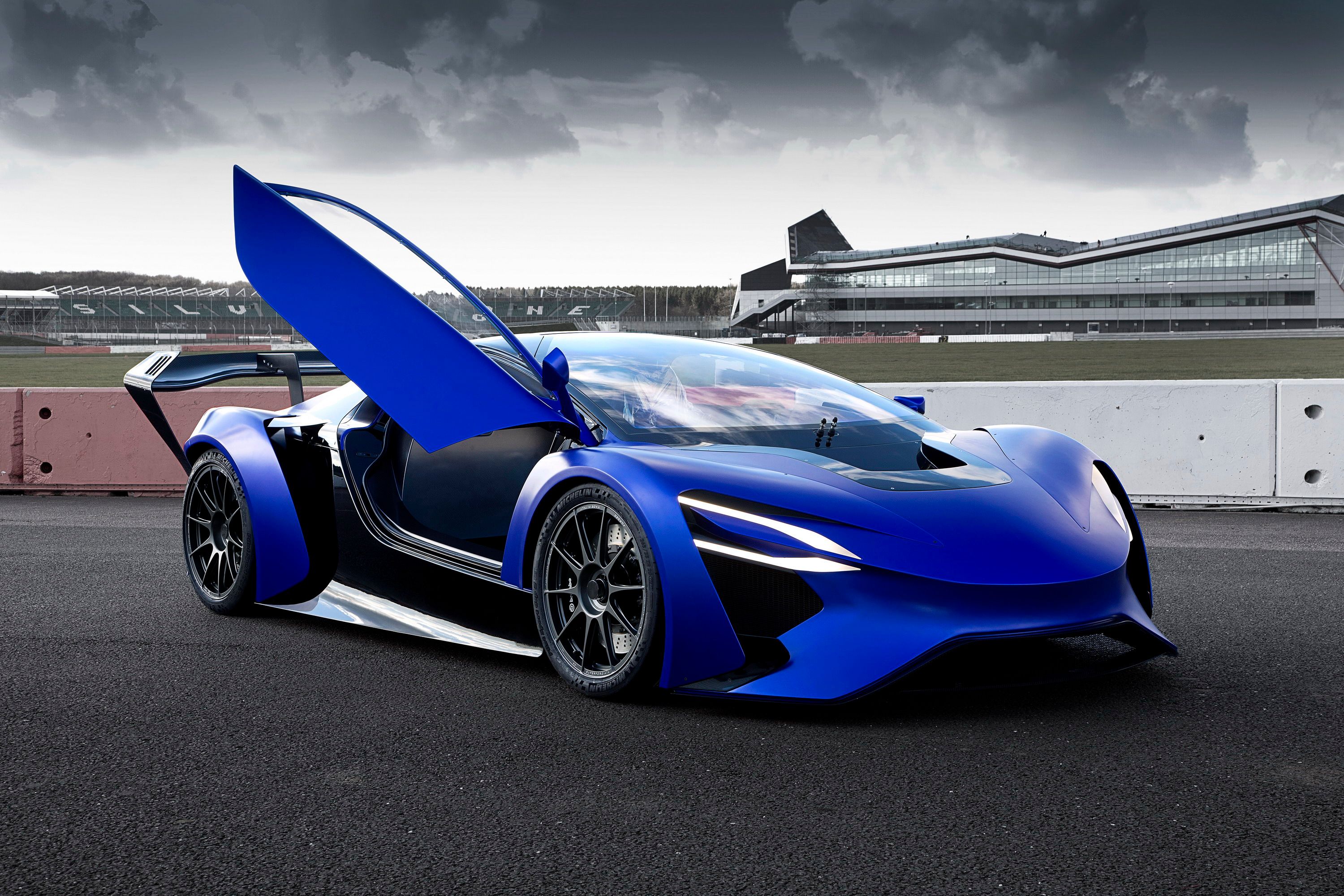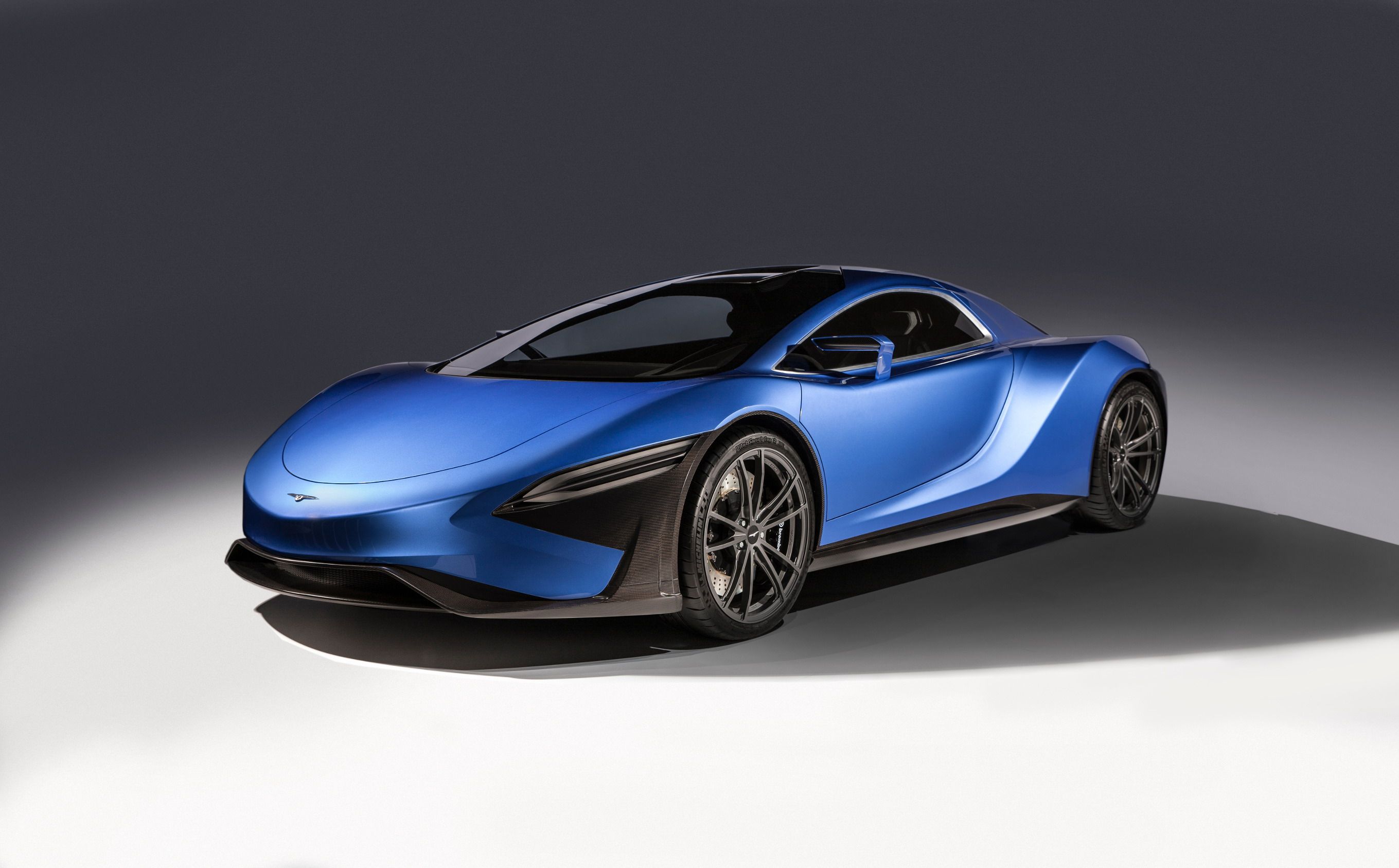The Geneva Auto Show->ke228 always serves as a home for some interesting concept cars, and this year one of the most interesting concepts->ke169 comes from a company called Techrules. Techrules is a China-based research and development company that is apparently looking to rewrite the electric-car rulebook with its AT96 and GT96 TREV electric supercars.->ke177 As a short explanation, the car’s use a micro-turbine as an onboard generator to charge the car’s battery packs. If this sounds familiar, it should – we saw a similar technology back in 2010 at the Los Angeles Auto Show->ke211 in the 2010 Jaguar C-X75.
According to Techrules, the TREV, which stands for “turbine-recharging electric vehicle,” can be designed to run on a number of different fuels like aviation kerosene, biogas, and nature gas, to name a few. Aside from this somewhat unique take on battery recharging and range extension, the AT96 concept itself is pretty wild looking and well worth taking a good look at. According to Techrules, this puppy can achieve 1,569 mpg under plug in operation.
Chances are we’ll never see this particular concept, and its technology->ke1701 as it is, ever make it into production, but according to Techrules, the plan is to build its own low-volume supercar within the next few years. A few years after that, it plans to begin production of higher-volume city cars. Oddly enough, a development prototype of a TREV supercar started testing just last month on the Silverstone race circuit in the U.K.
So, now that you can see how interesting and potentially game changing the technology in the AT96 TREV is, let’s take a much closer look at it.
Continue reading to learn more about the Techrules AT96 TREV.
2016 Techrules AT96 TREV
- Make: Array
- Model: 2016 Techrules AT96 TREV
- Horsepower: 1030
- Torque: 6300
- [do not use] Vehicle Model: Array
Exterior
This is a rather wild-looking concept, though something about it makes me question whether or not I would push it to the extreme speeds it’s said to be capable of. Up front, the fascia and what would be a hood are one piece, with two LED light strips in the corners for headlights. Down below the headlights sit the corner vents, which presumably channel cool air over the electric motors to help keep them cool. The 3-shaped cutouts in the fascia, which are completely separated from the fenders, comes to two sharp points. At the bottom of the fascia is a small beam that connects the two corners of the fascia together. Mesh fills the open area in the air dam and the corner vents.
Moving to the sides, the actual shell of the car loses a bit of its width as you move closer to the rear. The side skirts are thin, flat units that extend from the bottom of the body outward, probably to provide a large amount of downforce to the rear of the vehicle. It appears as if air is channeled through the front corner vents, around the tires, and along the top of the side skirts. The rear end wraps around the rear wheels at the top to create the fenders, if that is what you would call them. The doors are rather smooth and are hinged at the top, front corner.
In the rear, the same gloss-black finish that was used for the side skirts makes up most of the rear, with the tail lights and brake lights integrated into it. The blue body surrounds this rear panel, with a large, but rather bland rear diffuser mounted at the bottom. The rear spoiler is completely unique and attaches to the body at the sides of the rear end, behind the rear wheels, and on top of the rear deck. It is certainly an interesting design, and according to Techrules, the entire body is composed of carbon fiber to help reduce weight and provide torsional rigidity.
Interior
The fact that the AT96 is a track-focused concept explains why the body is so extreme, and why there is only one seat inside. Looking through the doors, we can see lots of carbon fiber making up the center tunnel, door sills, trim panels, dash and center controller housing. The steering wheel is three-spoke in design, but it almost square shaped. Ahead of the steering wheel is what appears to be an eight- or nine-inch display screen that provides all the necessary information like speed, battery state, charging system state, and other performance-based information. The seats and steering wheel look to be wrapped in Alcantara.
The one odd thing I’ve noticed here is that despite that large glass windshield, it looks like the driver may have some difficulty seeing. I’m not sure if what the purpose is, but the dash in front of the driver cures up wildly, coming within just a few inches of the forward glass. Very odd indeed. In the center, there is a large, semi-floating panel that housing all of the switched and warning indicators that are normally associated with track vehicles, and down below the brake and throttle pedals are done up in what appears to be drilled aluminum.
So you’re probably wondering why an electric car such as the AT96 has a tunnel in the middle of the interior. Well, it isn’t for a transmission, because there is no engine up front. That tunnel is actually where the T-shaped battery pack resides under the body. When you really think about it, that is a pretty slick design. Instead of exposing the driver to the batteries, the liquid cooled units are stored underneath. Plus, it gives the interior the appearance you normally see with front, longitudinally mounted engines. Given the odd bodywork on the outside, I expected the interior to look thrown together, but aside from those weird fins on the dash in front of the driver, this concept looks ready to hit the track on the inside.
Drivetrain
This is where the AT96 Concept really gets interesting. You probably expect to hear about four electric motors, but that isn’t the case. There are actually six electric motors present. One for each front wheel, and two for each rear wheel. Each motor weighs just over 28 pounds and is coupled to its own dedicated inverter. The batteries that power these motors are mounted in a T-shaped pattern in the middle of the vehicle and are composed of 2,376 individual 18650 cylindrical cells that use “ultra-safe” Lithium-magnese-oxide chemistry.
These batteries are charged by plugging the vehicle into a standard wall socket, or can be fully charged in about 40 minutes by the onboard, rear mounted turbine generator system. Basically, air that is pulled into the turbine is passed through a heat exchanger where it is then compressed and turned into cold air. Ignition of the compressed and heated fuel-air mixture creates energy that is channeled to rotate the vanes of the turbine. The shaft of the turbine rotates the generator, which then generates electricity. Here’s where it gets weird, though.
Instead of sending all 36 kW of electricity from the turbine to the motors, six percent is used to power auxiliary electronics, while the other 30 kW is sent to the battery back to charge it. Use of a smart battery management system has enabled Techrules to change the way the batteries are charged. Instead of losing energy by discharging the cells that charge fast – the balance method used in most hybrid systems – the extra energy in those cells is transferred to other cells, creating a harmonious balance between all of the cells.
According to Techrules, the combined output of all electric motors is 1,030 horsepower and an unbelievable 6,300 pound-feet of torque. Techrules claims the concept can hit the 62 mph sprint in 2.5 seconds with a top speed of 217 mph. Plug-in juice provides enough power for about 31 miles. Using the generator as the sole means of charging brings the fuel consumption down to 62 miles for every 1.26 gallons of fuel used, or roughly 50 mpg. So where did that 1,569 mpg figure that I mentioned earlier come from? Well, that’s what you get under plug in operation, which means you have to plug the car in every time the batteries are depleted to gain that kind of fuel economy. Running off the generator system alone, and you’ll share fuel economy similar to that of the hybrid vehicles on the road today. Should have known there was a gimmick in there somewhere.
Conclusion
I have to give props to Techrules for coming out with such a bold and unique design for its AT96 concept car, but I think it is trying to be a little misleading offering up fuel economy numbers above 1,500 mpg. Sure, it can achieve that, but only if you stop every 30 miles or so and plug it in. If you use the car as most would considering this is a track car, you’re going to get about 50 mpg which really isn’t any better than the other hybrids on the market. The uniqueness of the model lies in its turbine and generator, which up until now has been rather inefficient in the past. Plus, it can easily be adapted to run whatever fuel is available in a given market, so that is a nice advantage too. At the end of the day, Techrules may be at the forefront of developing some pretty radical technology, but it has a lot more work to do if it’s really going to compete in any market. The biggest benefit here is that the car doesn’t use a fuel-power engine, or, in this case, the turbine, to turn the wheels. The fact that the car can charge and drive at the same time, without ever running out of juice is a big deal, and I’m curious to see how well this strategy plays out in the future.

